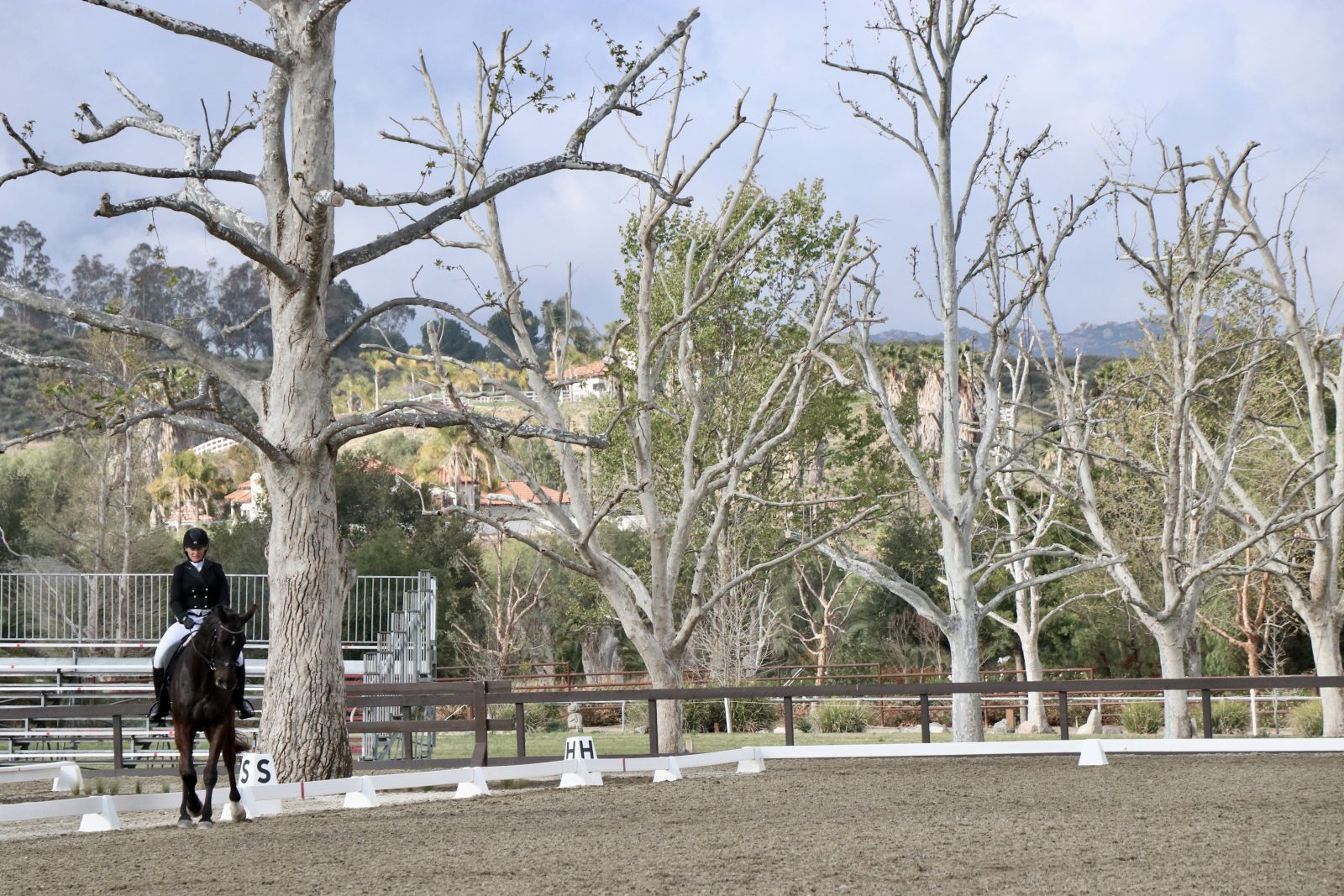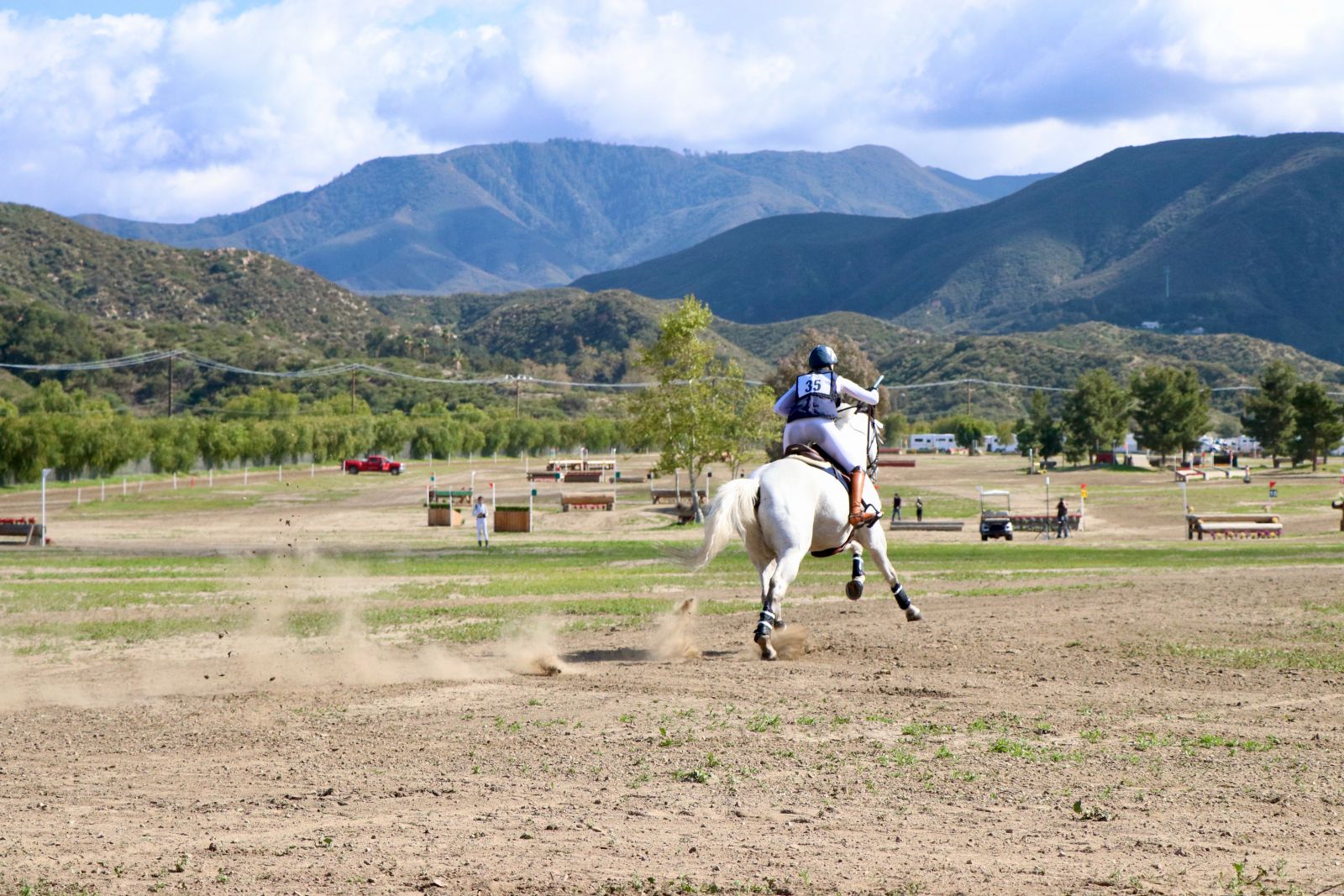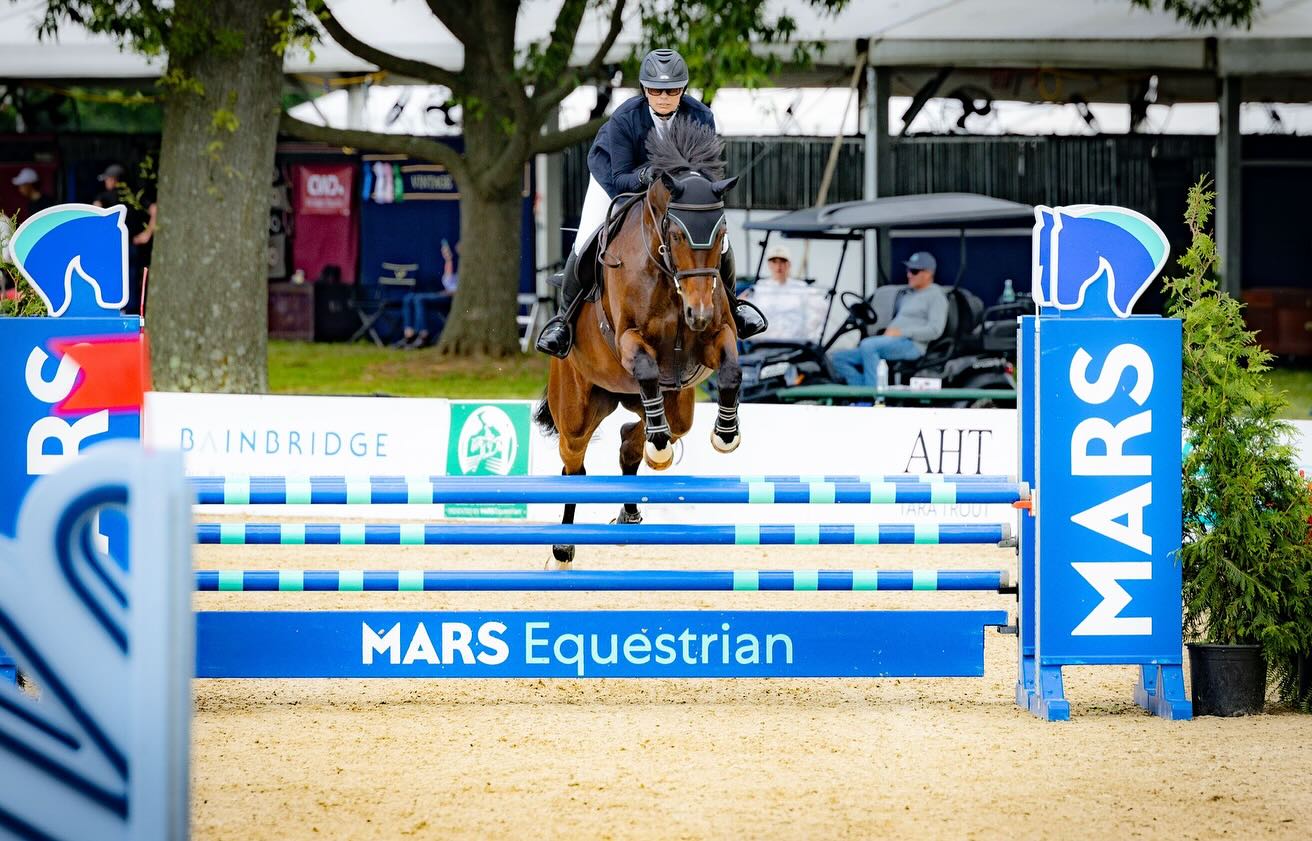Welcome to Amateur’s Corner on Eventing Nation! The goal of this series is to gather perspective, experience, and advice from the hardworking and dedicated amateurs that populate our sport. We’ll be doing Q&A profiles with amateurs from all walks of life, hoping their experiences can help others working to balance horses with, well, the rest of life. Do you want to participate in an Amateur’s Corner Q&A? Send your tip to [email protected]. To read more Amateur’s Corner Q&As, click here. Next up is Krista Wilson, a dedicated volunteer and retired teacher who events at the Novice level in Area III with her 8-year-old warmblood, Stella.

Krista Wilson and Stella at Three Lakes. Photo by Victoria DeMore Photography.
EN: First, tell us a little about yourself.
KW: I was born in Georgia grew up in Tallahassee, Florida. I did not start lessons till I turned 24 and started my first teaching job in Jacksonville, FL. I rode with Jack Kenny of Durbin Hill Farm and did the hunter/jumpers with him on OTTBs in the 80’s and 90’s. He was an Irishman and he was the “go-to” guy in the area if you had a horse with a problem. He trained lots of OTTB’s and I got a great foundation of how to take care of horses. It was not a fancy place, but the horse always came first. They looked like a million bucks. He was such a great horseman. I looked up to riders like Rodney Jenkins, Michael Matz and Margie Goldstein as they were the riders who were winning in showjumping at the time. I bought my first horse, Doc Holiday from him.
EN: What or who gave you the “eventing bug”?
KW: I started eventing in 2002 with Linda Konst in Wesley Chapel, Fl. when I moved my second horse, Duchess to her barn. She had a lovely cross-country field and we just started playing around with the jumps there. My horse was ready for a change from the hunter ring, and Linda was just so knowledgeable on every aspect of horses. I was not remotely aware of how to do dressage, but Linda was very patient. Linda is an all-around excellent horse woman. She is another great friend who feels like family. Everyone loves her! I have been so fortunate to meet the right people at the right time. Like Jack Kenny, horsemanship is paramount in her book.
EN: Tell us about your “work/life/ride balance”. What does this mean to you?
KW: Embrace the suck! I am a retired teacher and have a very nice 8-year-old warmblood Novice horse, Stella. (We were ranked #5 in the country last year at Beginner Novice and are ranked #2 at Novice on the USEA leaderboard as of this month) She cost less than $4,000 and I bought her at an online auction without a vet check, without sitting on her. I had planned to pay around $2300, but drinking wine while on the phone with a fellow eventer, I ended up going a bit over budget! She is the nicest horse I have ever owned. I think she might be by Silvio, an Oldenburg stallion who is not registered but sired quite a few horses up in Virginia, but I am not 100% sure of her breeding.
I have bought and sold horses that did not work out. I did not start riding till I was 24 years old and bought my first horse at age 33. I am 59 yrs old and I have never given up on my dream. It is not an option, I am determined and thoughtful in my choices. I often work in exchange for lessons. I organize clinics and my fee is free participation. I watch the warmup of the best riders, and I watch training videos. I am a good grant writer and have benefited from a Sports Psychology Grant that the USEA offered and I won.
I do live in Area 3 in Florida, so I am lucky to have the opportunity to show with some of the best in the country. I support the local riding eventing group (FHTA) and also benefit from being a member. I frequently volunteer at horse shows – this gets me free schooling passes and free education, and is also a lot of fun! I don’t understand why people do not volunteer more – it is such a good way to learn. I guess that many people do not want to put in the hard work to succeed. I am not sentimental about selling a horse if it is not helping me towards my goals. I have had to pay mortgages, car payments, VISA bills, and insurance like everyone else.
My advice? Buy used (truck, trailer, tack,) everything! I have zero regrets because now, I am retired and showing rated shows and having an absolute blast. When there is a rated show, I often stay overnight with a friend or camp in my horse trailer at a place near the show that is less costly than on the show grounds. My experience as a school teacher taught me to deal with disappointments and brush them aside and move on. My horses got me through the stress of work for years- I know that so many people find solace in riding and just being around horses, I feel lucky to have horses in my life. You have to think outside the box and just push on through. Start volunteering and see what happens. I have shown without a groom my entire life; it’s not easy, but I am very self-reliant and self-sufficient.

Photo by Lisa Madren.
EN: Describe a typical day in your week.
KW: Get up, have coffee, fix breakfast, and lunch-to-go. Often, I cook dinner in the morning, so I just have to reheat it when I get home. I like to read in the morning. We have a great newspaper in my area, and I like to stay informed on current events. Next, go to the barn and either work around the barn (painting jumps, cleaning stalls, dragging the arena, always a project that needs doing), and ride Stella.
I try to take a dressage lesson and a jumping lesson every week and I try to school cross country twice a month. I do fitness work with Stella, which is walking 30 minutes to an hour at least three days a week. I have the best trainers! Blair Martindale is my dressage trainer and she has found a way to make dressage fun! That is pretty huge! Richard Mathews is my jumper trainer and he has the best eye. I am amazed at the progress Stella and I have made under his tutelage. When I told him last year that I was getting rails in stadium more than I cared to admit, he had me change my warmup. I have not had a rail since!!! (Six shows and counting!) I use Zoe Crawford for cross country and with her, I have done jumps that I have never thought were possible. For example: we jumped a log into the water at Barnstaple the other day- and I told her it was a “bucket list” item for me! Riding should be fun and with these trainers, it always is. What they have in common is they are all patient, have good senses of humor, and are not too intense in a lesson. They
EN: What is your best advice as an amateur rider? How do you “make it work”?
KW: Marry a good person who understands how much the horses mean to you. I met my wonderful husband, Ron when I was 40 years old through my sister. We hit it off quite well and I feel like I won the lottery! He is my number one fan, and he has always been super supportive! When I met him, I had just completed my second university degree and I had just gotten my second horse, Duchess. I sold my first horse, Doc, after I realized that I could not afford the hobby. I went back to school and got my Master’s degree and then when I bought the next horse, I could actually afford to pay all the bills and sleep at night.

Happy hour on horseback! Photo by Amy Welch.
EN: What drives you/motivates you the most?
KW: I love horses, I could just be around them and be happy. They are the most beautiful animals in the world. If I watch a horse movie, I get misty eyed just seeing a horse canter across the screen. I have no idea why, but I was born this way.
EN: What is the best or most impactful piece of advice you’ve gotten as an eventer?
KW: Lift your eyes.
EN: In one sentence, what does the sport of eventing mean to you?
KW: You don’t have to sit in the saddle to learn something new about eventing: volunteer!
EN: What is something with the sport that could evolve to better serve its amateur riders?
KW: I feel so strongly about volunteering. I think that all amateur riders should be required to put in 10 hours a year volunteering at a horse show in order to compete at any regional or national championship. This sport runs on volunteers and it’s like professional development hours when you volunteer: you have to constantly sharpen that knife or it gets dull.
That being said, I think professionals need to think about how they can support the volunteers more. Everyone – amateurs and professionals alike – has a responsibility to think about how they are affecting the sport. You are a role model whether you want to be or not. Try to be a good one!











































